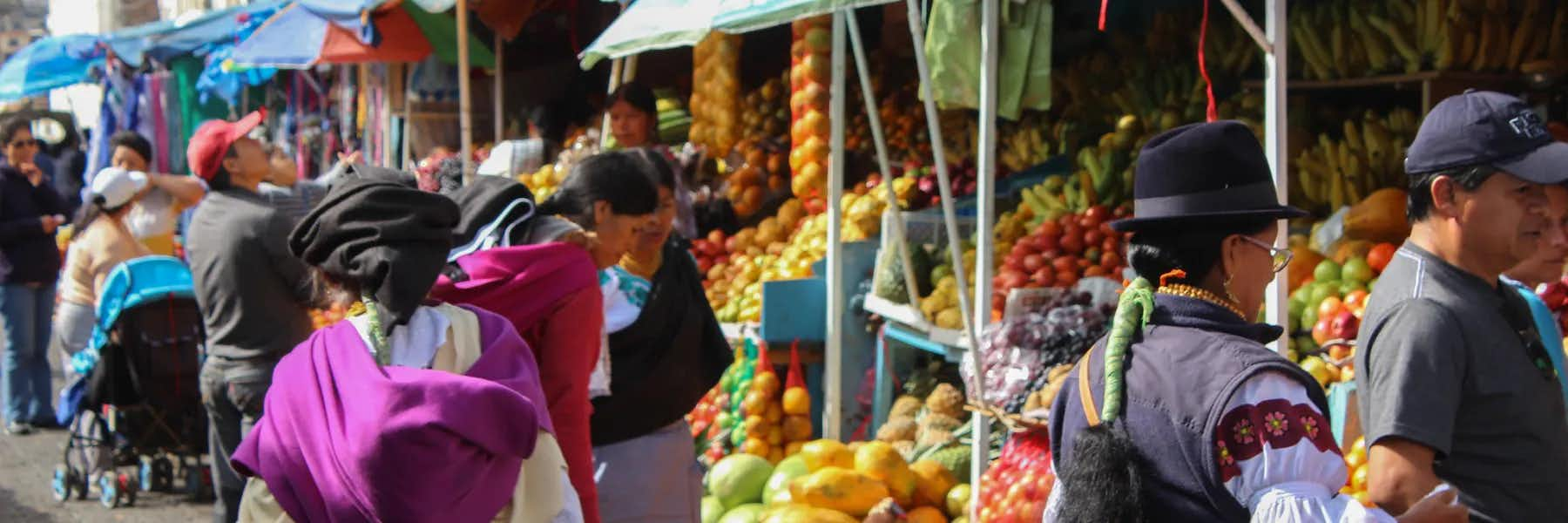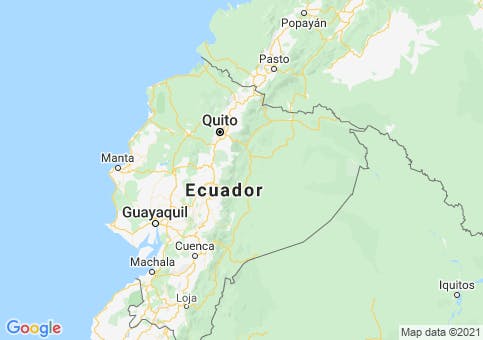During the past decade, Ecuador has become an increasingly popular expat destination, particularly for American and Canadian citizens. Tucked away in the northwest corner of South America, just below neighboring Colombia, it frequently ranks within the top 10 best retirement destinations worldwide.
The low cost of living in this small Andean country is often cited as one of the main draws for overseas retirees choosing it as their new home. A couple can live quite comfortably in Ecuador for less than $23,000 per year. This budget allows for renting a nice apartment in a major city; eating out at good restaurants frequently; access to high quality healthcare; having a weekly house cleaning service; and owning your own vehicle (though most expats don’t find it necessary to have one). It’s hard to imagine being able to enjoy all that on a comparable budget in your home country!
Housing
Regardless of where you live, housing is usually your biggest expenditure. Rental costs in Ecuador are significantly cheaper than what you would find in the U.S. While prices vary depending on location, but it’s generally possible to find modest, two-bedroom apartments renting for as little as $300 per month in the less-sought-after areas, and topping out at around $1300 per month for a luxury duplex penthouse in the best neighborhood of a city.
Get Your Free Ecuador Report Here
Get Your Free Ecuador Report Here
Learn more about Ecuador and other countries in our daily postcard e-letter. Simply enter your email address below and we'll send you a FREE REPORT - Ecuador: Live Like Royalty on Your Social Security.

By submitting your email address, you will receive a free subscription to IL Postcards and special offers from International Living and our affiliates. You can unsubscribe at any time, and we encourage you to read more about our Privacy Policy.
Cuenca, a stunning colonial city nestled high in the Andean mountains, is the most popular retirement destination in Ecuador and consequently has some of the highest housing prices. But even here, you can rent a modern, two-bedroom apartment with a terrace and mountain views for around $750 per month in one of the nicest parts of the city. And that includes internet, building maintenance fees, and all utilities!
In the capital city, Quito, which also has a healthy expat population (including many international embassy workers), prices are similar and it’s possible to find a three-bedroom furnished apartment in the heart of the city, close to restaurants and cafés, for around $800 per month. Quito also boasts some very high-end neighborhoods, such as Cumbayá and Quito Tenis, where you can really live the life of luxury—a large house in a gated community, private swimming pool, jacuzzi, etc., which can run upwards of $2,000 per month—a fortune in Ecuador, but a fraction of what something comparable in the U.S. would set you back!
If you’re looking for a more rural lifestyle, the mountain towns of Cotacachi and Vilcabamba are also popular expat havens, and generally offer cheaper housing options. It’s possible to rent a modest house in the countryside, with some land and perhaps fruit trees in Vilcabamba for $500 to $600 per month. In Cotacachi, you can find a comfortable, one-bed furnished apartment in the historic center of the town for around $400 a month.
Bills
Throughout Ecuador, you can expect your utility bills to be noticeably lower than what you’re used to at home. In our apartment in Cuenca, we typically pay about $3 per month for gas (no A/C or heating needed here!) Internet is around $25 per month, and electricity rarely exceeds $20 per month. We top up our cell phones for just $10 a month, which includes 10GB of mobile data each time!
Thanks to the very affordable housing/utility costs in all these locations, many expats also enjoy the benefits of a weekly maid service, which typically runs around $20 to $25 for a full day of cleaning/cooking/laundry, etc. And saving money on rent also means you have a lot more to spend on dining out – which is, in itself, very cheap! Even at the highest-end restaurants in Cuenca or Quito, a couple would be hard-pressed to spend more than $70 or $80 for a fantastic meal, including starters, desserts, and wine (including a 10% tip, which is standard in good restaurants). At the other end of the spectrum, ‘almuerzos’ (set-course lunches) cost as little as $2.50 and always come with a fresh juice, a tasty soup, a main course and often a small dessert. Locals typically eat their main meal of the day at lunchtime, and there are hundreds of these hole-in-the-wall eateries in any town or city.
For day-to-day food shopping, the local markets are full of fresh, tasty produce that will fill up your cupboards without emptying your wallet. It’s common to find mangoes and avocados priced at a dollar for three; strawberries can be as little as a dollar per pound; and fresh, local blueberries go for a dollar per small box. All kinds of fresh meats and fish can also be found in these markets, and this is for sure the best way to save money when food shopping. A national supermarket chain – Supermaxi – offers American-style shopping, with many imported goods, but you’ll pay a lot more for these ‘luxury’ items. Still, it’s nice to know that if you really miss that Jif peanut butter or Hershey’s chocolate, you can still find it in Ecuador!
Public Transport
One of the greatest benefits of moving to Ecuador is that you don’t need to own a car! While some expats choose to have one, most find that public transportation comfortably meets their needs. In the large cities, particularly, there are widespread public transit systems that are extremely cheap. Cuenca has a new tram system, the ‘Tranvía,’ which is smooth and efficient. Quito is also close to completing a 13-mile-long underground metro network, which is expected to start taking passengers at the end of this year. A typical bus ride within a city will cost around 30 cents, while a taxi ride will generally not exceed a few dollars (unless traveling long distances within Quito). Even better news is that buses and trams are half price if you’re over 65! You get your own special ‘tercera edad’ (third age) discount, which also applies to airline tickets originating within Ecuador (including to international destinations), and discounts at movie theaters, music events, and more.
Public transportation is also easy in the more rural parts of the country, since many locals depend on this for all their mobility needs. It’s not uncommon to see a farmer loading sacks of potatoes onto a bus in the middle of nowhere! Buses link all towns and cities throughout Ecuador, and travel is cheap. The four-hour trip from Cuenca to Guayaquil currently costs $10, while the 10-hour ride from Quito to Cuenca is around $18. It’s also possible to fly domestically between the larger cities, with one-way trips averaging between $50 to $100 depending on baggage allowance. LATAM Airlines operates flights nationally and to the U.S., and is a reliable and affordable carrier.
Get Your Free Ecuador Report Here
Get Your Free Ecuador Report Here
Learn more about Ecuador and other countries in our daily postcard e-letter. Simply enter your email address below and we'll send you a FREE REPORT - Ecuador: Live Like Royalty on Your Social Security.

By submitting your email address, you will receive a free subscription to IL Postcards and special offers from International Living and our affiliates. You can unsubscribe at any time, and we encourage you to read more about our Privacy Policy.
Healthcare
Healthcare in Ecuador is extremely affordable, and in the major cities the standard of care is high and the equipment state-of-the-art. There’s a public health system – IESS – which foreigners may buy into for as little as $79 per month (or $95 per month for a couple), and the standard is quite good in many places, although waiting times can be long and medications not always readily available.
The private system is excellent, and health insurance plans are very affordable – ranging from $50 to $200 per month, depending on level of coverage and deductibles. Even if you pay out of pocket, expect many aspects of healthcare to cost only about one tenth of what they would in the States. For example, MRI scans generally run around $200 to $300; an appointment with a general practitioner is typically between $30 to $40; and physical therapy appointments can be as low as $20 an hour.
Many physicians in Ecuador have done some training in the US or Europe, and most of the larger cities have well-equipped, modern hospitals. Be prepared, however, to be your own advocate to a certain extent, since things do run differently from how you might be used to. One great thing is that doctors are always accessible to patients and often provide their personal cell phone/WhatsApp number for communication purposes. And it’s always easy to schedule a next-day appointment with most providers in the private system.
Sample Monthly Budget for Living in Ecuador
Below is a sample monthly budget for a couple to live a pretty nice lifestyle in the city of Cuenca. It’s certainly possible to live for considerably less than this, but we’ve included some luxuries – such as car ownership and dining out at decent restaurants – to give you an idea of the lifestyle you can still have for under $23,000 a year. Overall, it’s fair to say that if you move to Ecuador, you can be sure that the lifestyle you’ll be able to enjoy will far exceed what you would have been able to afford in your home country for something comparable. For more information, subscribe to International Living Magazine.
| Rent (2-bedroom, unfurnished apartment in good neighborhood, includes building fees) | $600 |
| Utilities phone, gas, water, electricity, internet, and DirecTV) | $120 |
| Maid (once a week) | $100 |
| Groceries (excludes alcohol) | $500 |
| Maintenance, insurance and fuel for one car (excludes registration fees) | $140 |
| Healthcare (IESS) | $95 |
| Misc. (personal items, etc.) | $100 |
| Entertainment (two people dining out at mid-range restaurant six times a month with drinks, dessert, and tips) | $250 |
| Monthly Total: | $1905 |
| Yearly Total: | $22,860 |
Get Your Free Ecuador Report Here
Get Your Free Ecuador Report Here
Learn more about Ecuador and other countries in our daily postcard e-letter. Simply enter your email address below and we'll send you a FREE REPORT - Ecuador: Live Like Royalty on Your Social Security.

By submitting your email address, you will receive a free subscription to IL Postcards and special offers from International Living and our affiliates. You can unsubscribe at any time, and we encourage you to read more about our Privacy Policy.












